Classification and Physical Characteristics
The giant isopod, a fascinating denizen of the deep, belongs to the genus Bathynomus, encompassing approximately 20 species. Taxonomically, they reside within the order Isopoda, making them relatives of familiar crustaceans like shrimps and crabs. Among these, Bathynomus giganteus often claims the title of the largest, though others may reach comparable sizes.
Their most striking feature is their size, a testament to deep-sea gigantism. Reaching lengths of up to 20 inches, they dwarf their terrestrial relatives, the pillbugs. Their bodies, segmented into five sections called pleonites, are encased in a tough, protective shell. This shell, often pinkish or pale tan, provides defense and can be rolled into a ball, much like a pillbug, for protection.
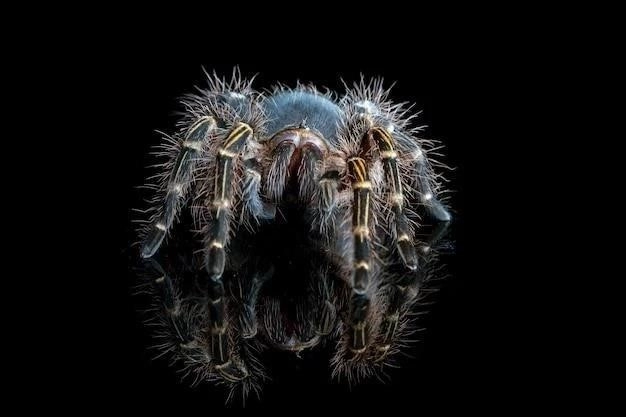
Habitat and Distribution
The giant isopod, a creature of the abyssal plains, inhabits the cold, dark depths of the Atlantic, Pacific, and Indian Oceans. Thriving in a world where sunlight barely penetrates, they are quintessential benthic organisms, favoring the muddy or clay seafloors of the continental slopes. This preference for soft sediment is closely tied to their feeding behavior, as this is where a significant portion of organic detritus ultimately settles, providing a steady, albeit dispersed, food source.
Their depth range is considerable, with most encounters occurring between 550 feet (170 meters) and a staggering 7,020 feet (2,140 meters) below the surface. Such depths are characterized by immense pressure, low temperatures, and scarce food availability – factors that have likely played a role in shaping their remarkable adaptations. While most research points to a preference for these profound depths, some species, notably one observed at 980 feet, demonstrate a tolerance for slightly shallower waters.
Geographically, their distribution is widespread yet patchy, mirroring the availability of suitable habitat and prey. While they can be found in most regions of the World Ocean where deep-sea environments exist, certain areas appear to harbor larger populations. The waters off the coast of Japan, particularly in the Pacific Ocean and the South China Sea, are recognized as hotspots for giant isopod sightings.
The preference for cold, deep waters is a defining characteristic of their ecological niche. These regions, often referred to as the bathyal and abyssal zones, are characterized by a unique set of environmental parameters. Temperatures remain consistently low, typically hovering between 35°F (2°C) and 39°F (4°C). The pressure at these depths is immense, reaching hundreds of times that at sea level. Food is scarce and unpredictable, primarily consisting of decaying organic matter, known as marine snow, that drifts down from the surface layers.
The giant isopod’s adaptation to this challenging environment is evident in its physiology and behavior. Its slow metabolism, for instance, is a direct response to the limited food supply. Similarly, its ability to survive for extended periods without eating—some reports suggest up to five years—reflects the unpredictable nature of food availability in the deep sea. The dimly lit environment has also influenced their sensory systems, with their large, sensitive eyes adapted to detect the faintest traces of bioluminescence, a common phenomenon in the deep ocean, which can signal the presence of food or potential mates.
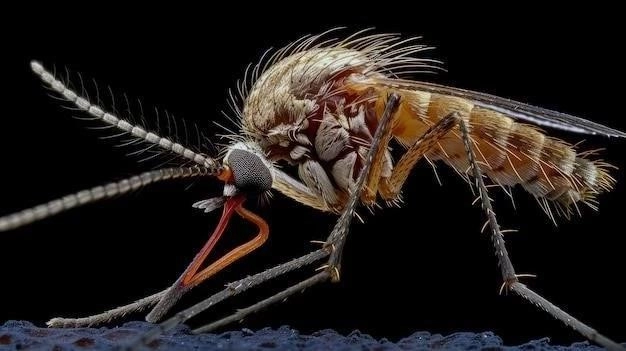
Deep Sea Gigantism
The giant isopod’s impressive size, dwarfing its terrestrial relatives, is a striking example of a phenomenon known as deep-sea gigantism. This intriguing evolutionary trend, observed across a range of deep-sea taxa, describes the tendency for invertebrates and other deep-sea denizens to grow to significantly larger sizes than their counterparts inhabiting shallower waters. While the exact mechanisms driving deep-sea gigantism remain an active area of scientific inquiry, several hypotheses have been proposed, each highlighting the interplay between environmental pressures and evolutionary adaptation in shaping body size.
One prominent hypothesis centers on the role of limited food availability in the deep sea. As food is scarce and often unpredictable in these environments, larger body size may confer a selective advantage. A larger body allows for greater energy reserves, enabling individuals to survive prolonged periods of famine, a common occurrence in the deep ocean. Additionally, a larger size can increase foraging efficiency, allowing individuals to cover more ground in search of scarce food resources and outcompete smaller organisms for limited prey.
Another compelling hypothesis focuses on the influence of low temperatures on metabolic rates. In the deep sea, where temperatures hover near freezing, metabolic rates tend to be slower. This slower metabolism, coupled with the high pressure of the deep, may contribute to increased cell size and longevity, ultimately leading to larger body size. This hypothesis suggests that gigantism may be a by-product of adaptations to the unique physiological challenges posed by the deep-sea environment.
The giant isopod, alongside other deep-sea giants like the giant squid and the colossal squid, exemplifies the remarkable capacity for life to adapt and thrive in even the most extreme environments. Their impressive size, a testament to the power of deep-sea gigantism, serves as a reminder of the mysteries still hidden within the depths of our oceans, awaiting further exploration and discovery.

Diet and Feeding Habits
The giant isopod, an iconic inhabitant of the deep sea, has captivated scientists and the public alike with its impressive size and unusual appearance. However, beneath its imposing exterior lies a creature finely tuned to the challenges of a nutrient-poor and unpredictable environment. Central to its survival in the abyssal depths is its specialized diet and opportunistic feeding strategy. The giant isopod is classified as a facultative scavenger, a dietary designation that reflects its remarkable adaptability and capacity to exploit a range of food sources in a challenging environment.
A significant portion of the giant isopod’s diet consists of detritus, the decaying organic matter that rains down from the surface waters. This steady, albeit dispersed, food source, often referred to as marine snow, includes a variety of materials, such as dead plankton, algae, and fecal pellets. Giant isopods, with their benthic lifestyle, are strategically positioned to intercept this falling bounty, using their sensitive antennae to detect the faintest traces of organic matter in the water column.
While detritus forms the foundation of their diet, giant isopods are also opportunistic carnivores, capable of consuming larger prey when the opportunity arises. Whale falls, the carcasses of whales that sink to the ocean floor, represent a veritable feast for these deep-sea scavengers. These massive carcasses provide a concentrated source of nutrients, attracting a diverse assemblage of organisms, including giant isopods, which feast on the decaying flesh and bones.
Their feeding adaptations extend beyond mere opportunism, however. Giant isopods possess specialized mouthparts designed for tearing and shredding food. Their powerful mandibles, paired with sharp maxillipeds, allow them to efficiently process tough materials, such as the exoskeletons of crustaceans and the skin and blubber of larger prey. This combination of scavenging and carnivorous adaptations underscores their remarkable resilience and ability to thrive in an environment characterized by both scarcity and unpredictability.
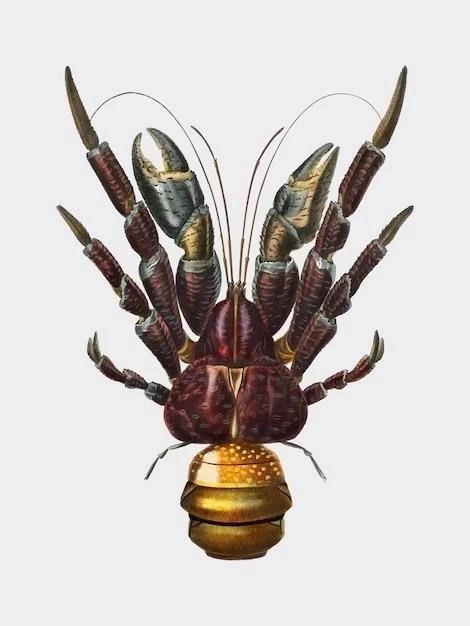
Anatomy and Morphology
The giant isopod, a fascinating inhabitant of the deep sea, captivates the imagination with its imposing size and otherworldly appearance. However, its true marvel lies in the intricate details of its anatomy and morphology, a testament to the power of evolution to shape life in response to the unique challenges of the deep-sea environment. This section delves into the remarkable structural features that enable the giant isopod to thrive in the abyssal depths.
Their bodies, dorsoventrally flattened and segmented, are encased in a rigid, calcareous exoskeleton that provides protection from predators and the immense pressure of the deep. This exoskeleton is divided into a series of overlapping plates, or tergites, which provide flexibility, allowing the isopod to move and maneuver within its environment. The most anterior tergite, known as the cephalon, covers the head and bears two pairs of prominent antennae, sensory organs that play a crucial role in navigating the dark depths and locating food.
Giant isopods possess two large, compound eyes, situated dorsally on the head, which, despite the dimly lit environment they inhabit, are surprisingly well-developed. These eyes, composed of thousands of individual light-sensing units called ommatidia, grant them a wide field of view and an exceptional ability to detect the faintest traces of bioluminescence, a common phenomenon in the deep sea. This sensitivity to light is crucial for detecting prey, potential mates, and navigating their surroundings.
Their thorax, composed of seven segments, each bearing a pair of pereopods, or walking legs, reflects their benthic lifestyle. These legs, adapted for locomotion on the soft, muddy substrates of the deep sea, end in sharp claws, used for gripping and maneuvering over uneven terrain. The abdomen, consisting of five segments, houses the isopod’s respiratory and reproductive organs. Unlike their terrestrial relatives, giant isopods breathe through specialized appendages called pleopods, located on the underside of their abdomens. These pleopods, feathery in appearance, extract oxygen from the water, allowing them to thrive in the oxygen-poor environments of the deep sea.
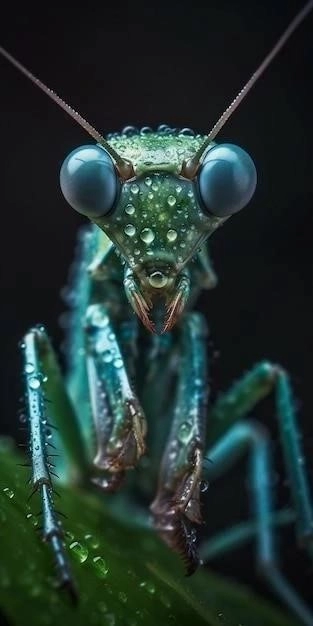
Reproduction and Lifecycle
The giant isopod, dwelling in the perpetual twilight of the deep sea, presents a fascinating case study in reproductive biology. The challenges inherent to their environment, characterized by low temperatures, high pressure, and sparse populations, have led to the evolution of unique reproductive strategies that maximize their chances of successful offspring recruitment. While much remains to be discovered about their reproductive behavior, ongoing research continues to shed light on the remarkable adaptations that enable these deep-sea denizens to perpetuate their lineage.
Reproduction in giant isopods is sexually dimorphic, meaning males and females exhibit distinct physical characteristics. Males are typically smaller than females and possess specialized appendages called peleopods, located on their abdomens, which play a crucial role in transferring sperm to the female during mating. The exact mechanisms of mate location and courtship in the deep sea remain largely shrouded in mystery, though it is hypothesized that chemical cues, potentially pheromones released by females, play a significant role in bringing the sexes together in the vast expanse of the deep.
Following successful mating, female giant isopods undergo a period of brooding, carrying their developing eggs in a specialized pouch called a marsupium, located on the underside of their thorax. This pouch, formed by overlapping plates, provides a safe and protected environment for the eggs, shielding them from predators and the harsh conditions of the deep sea. The number of eggs produced by a female giant isopod can vary significantly depending on species and environmental factors, with larger females typically producing larger broods.
Upon hatching, the juvenile isopods, known as mancae, emerge from the marsupium as miniature versions of their adult counterparts. Unlike many crustaceans, giant isopods do not undergo a larval stage. This direct development, where juveniles resemble miniature adults, is thought to be an adaptation to the deep-sea environment, where food is scarce and the dispersal of larvae could prove detrimental to survival.

Behavior and Adaptations
The giant isopod, a denizen of the deep sea, exemplifies the remarkable capacity for life to adapt and thrive in even the most extreme environments. Their behaviors and physiological adaptations reflect the unique challenges posed by the abyssal depths, where darkness reigns, pressure is immense, and food is scarce and unpredictable. This section delves into the fascinating repertoire of behaviors and adaptations that enable these deep-sea giants to navigate their challenging environment and secure the resources necessary for survival and reproduction.
Giant isopods, like many deep-sea creatures, exhibit a slow, deliberate mode of locomotion, conserving energy in an environment where food is scarce. They are primarily benthic, spending much of their time on or near the seafloor, using their seven pairs of pereopods, or walking legs, to navigate the soft, muddy substrates. Their legs, adapted for stability and traction in this challenging terrain, end in sharp claws, allowing them to grip and maneuver over uneven surfaces.
One of the most intriguing behaviors observed in giant isopods is their ability to curl into a tight ball, completely encapsulating their vulnerable underside within their tough, armored exoskeleton. This defensive posture, reminiscent of their terrestrial relatives, the pillbugs, provides protection from predators and is particularly effective against attacks from above. When threatened, they can remain in this defensive ball for extended periods, relying on their low metabolic rate to conserve energy.
Perhaps the most remarkable adaptation of the giant isopod is its ability to withstand prolonged periods of famine, a testament to the unpredictable nature of food availability in the deep sea. Their slow metabolic rates, a consequence of the cold temperatures and low oxygen levels of their environment, allow them to conserve energy and survive for months, and in some cases, years, without food. This remarkable feat of physiological endurance underscores their adaptation to an environment where food resources can be scarce and unpredictable.
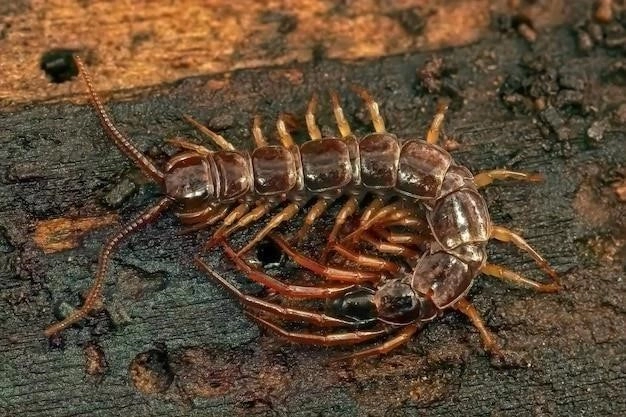
Conservation Status and Human Interaction
The giant isopod, a denizen of the deep, inhabits a realm largely untouched by direct human activity. Residing thousands of feet below the ocean’s surface, they are buffered from many of the anthropogenic pressures impacting marine life in shallower, more accessible habitats. However, despite their physical isolation, these deep-sea dwellers are not entirely immune to the pervasive influence of human actions on the global ocean.
Currently, the conservation status of most giant isopod species remains unassessed due to the logistical challenges of studying these deep-sea creatures. Data deficiency, a common problem in deep-sea research, hinders our ability to accurately estimate population sizes, distribution ranges, and potential threats. Therefore, it is crucial to exercise caution and adopt a precautionary approach when considering any activities that might impact deep-sea ecosystems.
One potential threat to giant isopod populations is deep-sea trawling, a fishing method that involves dragging weighted nets along the seafloor. This practice, often targeting commercially valuable species such as deep-sea fish and crustaceans, can inadvertently damage fragile benthic habitats and capture non-target species, including giant isopods, as bycatch. The ecological consequences of deep-sea trawling are a subject of ongoing scientific debate, with concerns raised about its long-term impacts on deep-sea biodiversity and ecosystem function.
Climate change, a pervasive threat to marine ecosystems worldwide, also poses potential risks to giant isopod populations. Ocean acidification, a consequence of increasing carbon dioxide levels in the atmosphere, can alter the pH of seawater, potentially impacting the development and survival of marine invertebrates with calcium carbonate exoskeletons, such as giant isopods. Furthermore, changes in ocean temperature and circulation patterns associated with climate change could affect food availability and the distribution of deep-sea species, including giant isopods.
Interesting Facts and Trivia
The giant isopod, a denizen of the deep, continues to fascinate scientists and the public alike with its unusual appearance and remarkable adaptations. Beyond its scientific significance, this deep-sea dweller has captured the imagination, inspiring a wealth of interesting facts and trivia that highlight its unique biology and place in the ocean depths.
- Record-Breaking Size: While the average size of a giant isopod is around 10 inches, the largest recorded specimen measured a staggering 2.5 feet in length, making it one of the largest crustaceans on Earth. This impressive size is a testament to deep-sea gigantism, a phenomenon observed in various deep-sea species.
- Feast or Famine: Giant isopods are renowned for their ability to withstand prolonged periods without food. Some individuals have been observed to survive in captivity for over five years without eating, a testament to their incredibly slow metabolic rates and efficient energy conservation strategies.
- Defensive Curl: When threatened, giant isopods can curl up into a tight ball, much like their terrestrial relatives, the pillbugs. This defensive behavior, made possible by their segmented exoskeletons, protects their vulnerable undersides from predators.
- Ancient Lineage: Isopods are an ancient group of crustaceans with fossil records dating back hundreds of millions of years. Their deep-sea adaptations, including their large size and slow metabolisms, likely evolved over millennia in response to the unique challenges of their environment.
- Cultural Icon: The giant isopod’s unusual appearance and deep-sea habitat have made it a cultural icon, appearing in documentaries, video games, and even inspiring plush toys. This popularity helps raise awareness about the deep sea and the importance of conserving these unique and often overlooked ecosystems.










